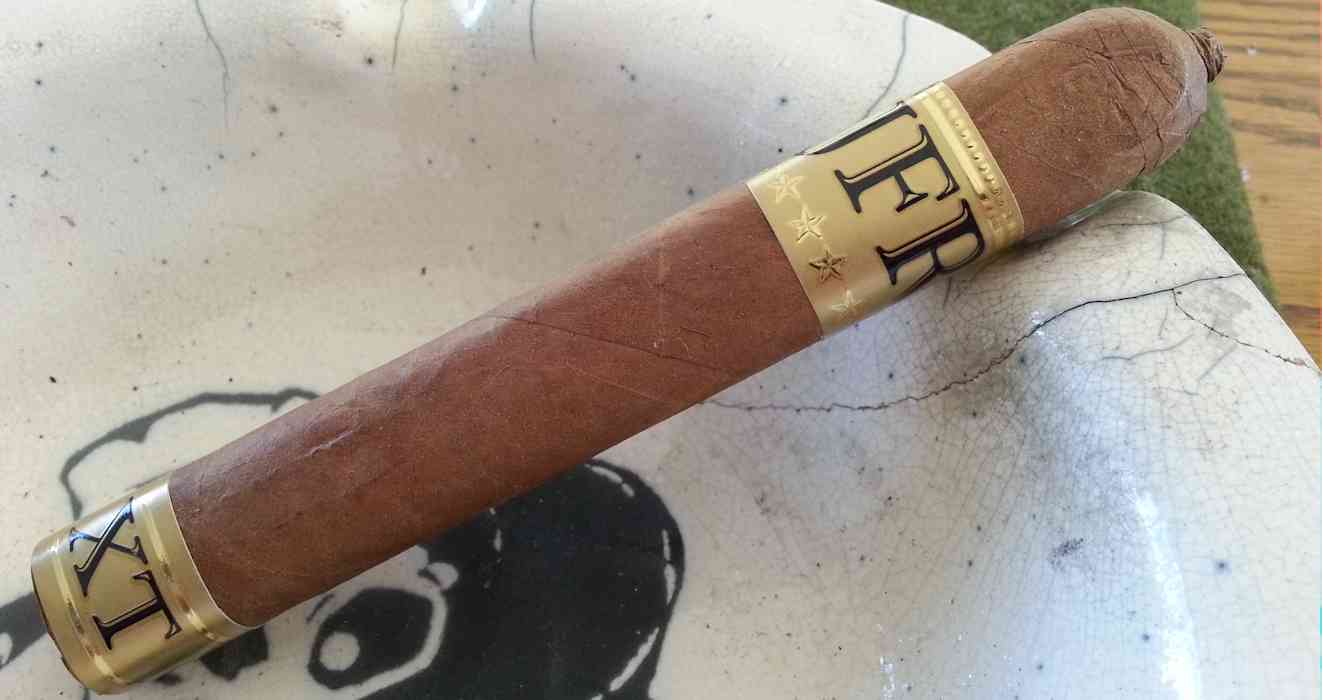 I recently had the opportunity to sample a few upcoming blends from Casa Fernandez. First up is the extension for the company’s JFR (Just For Retailers) line – the JFR XT Corojo. This cigar is also available in Maduro, and is produced in three vitolas: 654 (6×54), 660 (6×60), and 770 (7×70). They will be packaged in boxes of 24 and retail between $7-$9 based on vitola. The Corojo version has AGANORSA Corojo (Nicaragua) wrapper, Nicaragua (AGANORSA) binder, and Nicaraguan filler. Today I’m covering the 6X54.
I recently had the opportunity to sample a few upcoming blends from Casa Fernandez. First up is the extension for the company’s JFR (Just For Retailers) line – the JFR XT Corojo. This cigar is also available in Maduro, and is produced in three vitolas: 654 (6×54), 660 (6×60), and 770 (7×70). They will be packaged in boxes of 24 and retail between $7-$9 based on vitola. The Corojo version has AGANORSA Corojo (Nicaragua) wrapper, Nicaragua (AGANORSA) binder, and Nicaraguan filler. Today I’m covering the 6X54.
The preliminary once-over shows a light to medium brown color, which is remarkably consistent. So much so that the seams are difficult to find. The soft press has also hidden the veins to a great degree. The complexion is incredibly silky smooth – yet with very little discernible oil to the touch. I found neither soft nor hard spots in any of the three examples. Two of my examples had very small (1/8”) voids in the wrap, between seams. This did not impact that smoking experience; I just thought it worth noting.
The pre-light draw is slightly open, and provides solid oats, or grain flavor. Aroma is leathery and “clean.” Once fire is applied, the first puffs from the JFR XT were spectacularly filled with sweet cedar and a soft, almost creamy spice. This was likely due to the fact that it was largely composed of wrapper leaf from the closed foot. Lighting this closed foot was enough to carry forth and light the cigar itself. I’m always impressed when that occurs. The idea that 3-4 seconds with a torch can light a leaf that puts the entire foot of the cigar itself to fire serves multiple purposes. First, it makes lighting a breeze (and saves fuel for all you gas-misers out there). More importantly, to me, is the fact that this design gives the smoker an opportunity to sample the wrapper alone and get an idea of what it is specifically contributing to the cigar overall. The close foot has become one of my favorite features to see in a cigar.
Once well into this first inch or so of cigar, the spice has ebbed slightly, but still has a peppery quality – think milder, white pepper moreso than flaming red pepper. The draw is within normal range, but maybe a bit more open than the “goldilocks zone.” Outside of this slightly open draw and a flaky ash, the construction is very good post-light.
Passing the midpoint, the flavors have developed into a palette of sweet spices, cedar and leather. It seems Casa Fernandez’ cigars become more polished and blends more thought-out and developed with each passing day. The potency picks up some during the midsection, yet are still manageable for those of us with less tolerance. In all three samples smoked for this review, the middle of the JFR XT Corojo has been most attuned to my preferences in a smoke. The interplay between the sweet cedar and leather is delightful.
In the final stretch, the strength has picked up a bit more – although in comparison to many other Casa Fernandez blends, this one is more medium in nature. The sweet spices remain, but are backed up by some earthiness that has crept in. This is just the transition needed to make the cigar complete. The cigar has performed very well, and leaves me with a sweet, pleasant finish.
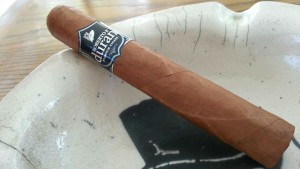 I recently received a few samples of the new eponymous Roberto P. Duran line
I recently received a few samples of the new eponymous Roberto P. Duran line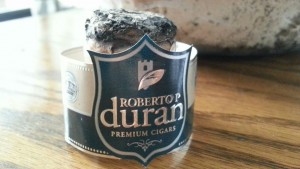 It settles quite a bit by the one-inch point, and the spice and pepper fall to the wayside and a very slightly sweet, leathery profile comes front and center. By midway, most of the spice has dissipated entirely. The sweetness has intensified and at times is even berry-like. That was an unexpected surprise, but presented in both examples smoked for this review. Each of the cigars suffered minor burn issues, in that they tended to go out if left unattended very long. Certainly not enough to ruin the experience, but worth noting for those who obsess over burn lines. The predominant flavors passing the midpoint are woodsy in nature, with a backdrop of the earlier sweetness. The final portion of each cigar showed very consistent development of the woodsy core, coupled with a bright nuttiness and waning sweetness. The strength begins to pick up here as well, and will continue to build for the remainder of the smoke.
It settles quite a bit by the one-inch point, and the spice and pepper fall to the wayside and a very slightly sweet, leathery profile comes front and center. By midway, most of the spice has dissipated entirely. The sweetness has intensified and at times is even berry-like. That was an unexpected surprise, but presented in both examples smoked for this review. Each of the cigars suffered minor burn issues, in that they tended to go out if left unattended very long. Certainly not enough to ruin the experience, but worth noting for those who obsess over burn lines. The predominant flavors passing the midpoint are woodsy in nature, with a backdrop of the earlier sweetness. The final portion of each cigar showed very consistent development of the woodsy core, coupled with a bright nuttiness and waning sweetness. The strength begins to pick up here as well, and will continue to build for the remainder of the smoke.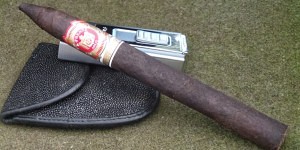
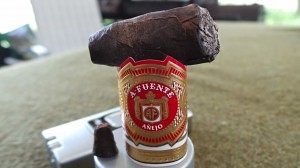
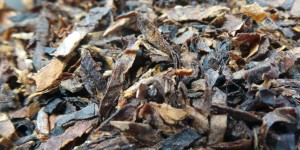 Without fail, the first few puffs from a bowl of Robusto are very nutty in flavor to my tastes. If blindfolded, I would probably speculate that there is some small portion of burley in the blend, but in all likelihood this comes from the cigar leaf. Body is full, with mouth filling, palate coating smoke. I have to admit that this particular blend is one of very few cigar blends for which I ever reach. I’m generally of the opinion that if you want a cigar, have a cigar. If you want a pipe, have a pipe. I have to credit Mr. Pease with creating a very good blend that can satisfy both desires. At the same time, I don’t believe the average cigar smoker would confuse the flavor with that of a cigar. The cigar qualities are much more pronounced in the room aroma than to the smoker.
Without fail, the first few puffs from a bowl of Robusto are very nutty in flavor to my tastes. If blindfolded, I would probably speculate that there is some small portion of burley in the blend, but in all likelihood this comes from the cigar leaf. Body is full, with mouth filling, palate coating smoke. I have to admit that this particular blend is one of very few cigar blends for which I ever reach. I’m generally of the opinion that if you want a cigar, have a cigar. If you want a pipe, have a pipe. I have to credit Mr. Pease with creating a very good blend that can satisfy both desires. At the same time, I don’t believe the average cigar smoker would confuse the flavor with that of a cigar. The cigar qualities are much more pronounced in the room aroma than to the smoker.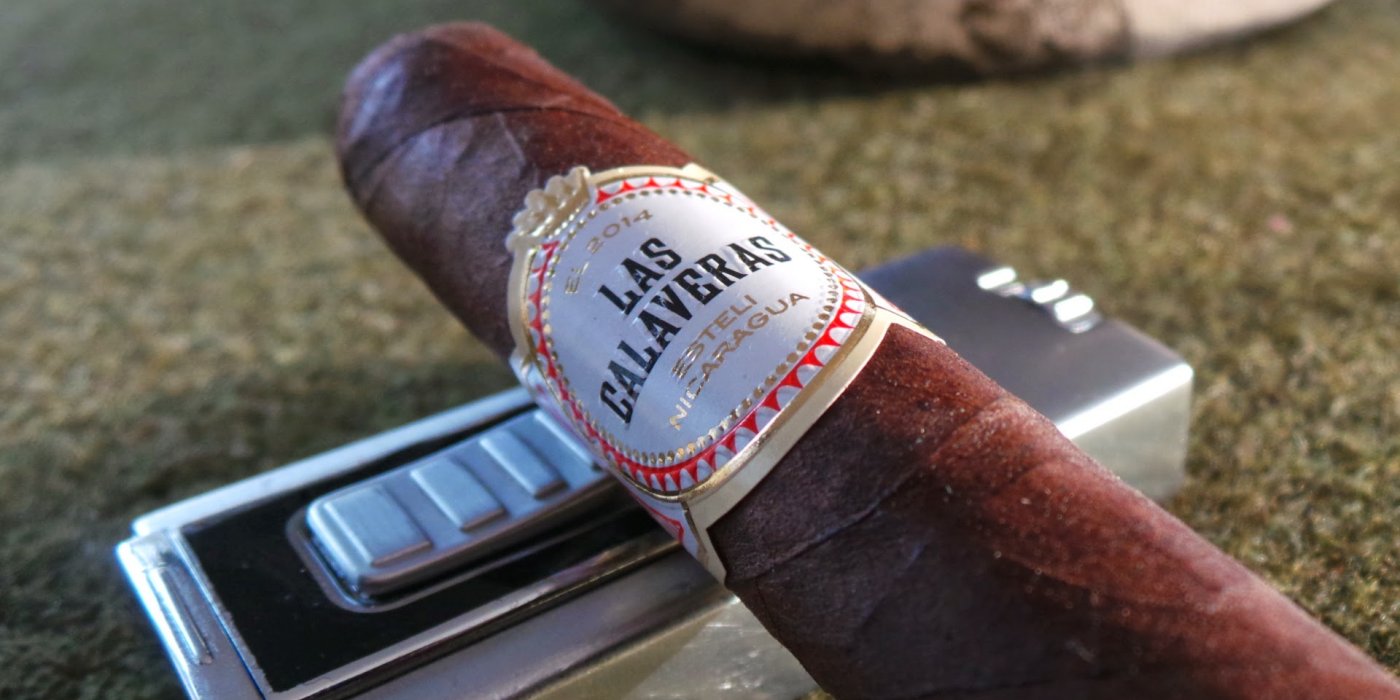 After no small amount of wrangling and reformulation, I am finally ready to go live with the new
After no small amount of wrangling and reformulation, I am finally ready to go live with the new 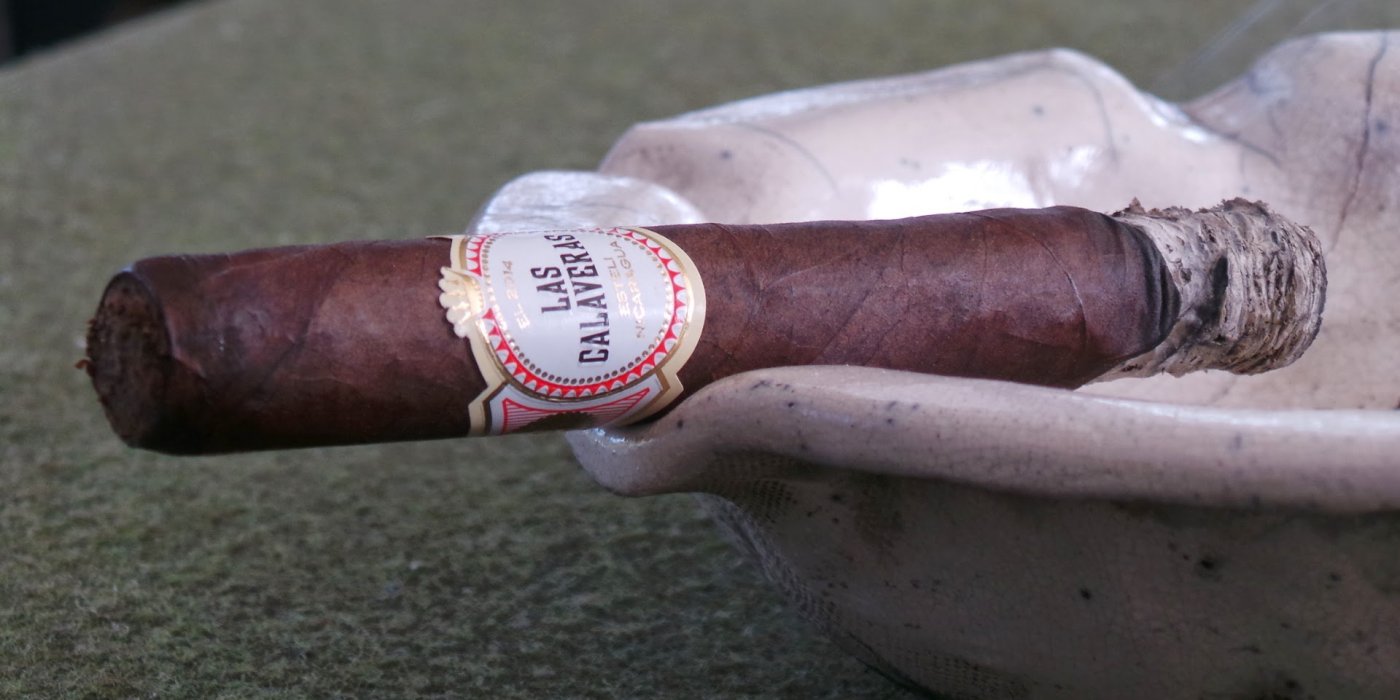 Initial puffs on the lit Las Calaveras take off with a slightly sour bent, but this adjusts within a minute or so and it immediately jumps into a predominantly savory profile with just a touch of sweetness. The retrohale is crisp, but not overly sharp. Some of the pre-light woodsy character presents, still with an oaken quality. The retrohale is noteworthy here, and very pleasant. It provides a touch of spice but is manageable and never uncomfortable. Flavors throughout the balance of this first third are dominated by the oak, but supported by a sweet leathery flavor that comes across as a mild citrus. The burn wanders a bit in these early minutes, with some minor scalloping.
Initial puffs on the lit Las Calaveras take off with a slightly sour bent, but this adjusts within a minute or so and it immediately jumps into a predominantly savory profile with just a touch of sweetness. The retrohale is crisp, but not overly sharp. Some of the pre-light woodsy character presents, still with an oaken quality. The retrohale is noteworthy here, and very pleasant. It provides a touch of spice but is manageable and never uncomfortable. Flavors throughout the balance of this first third are dominated by the oak, but supported by a sweet leathery flavor that comes across as a mild citrus. The burn wanders a bit in these early minutes, with some minor scalloping.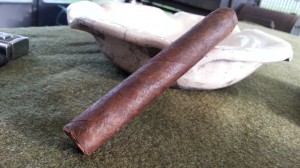
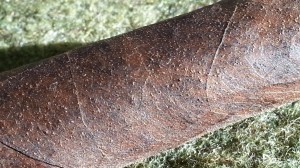
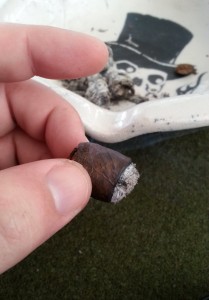
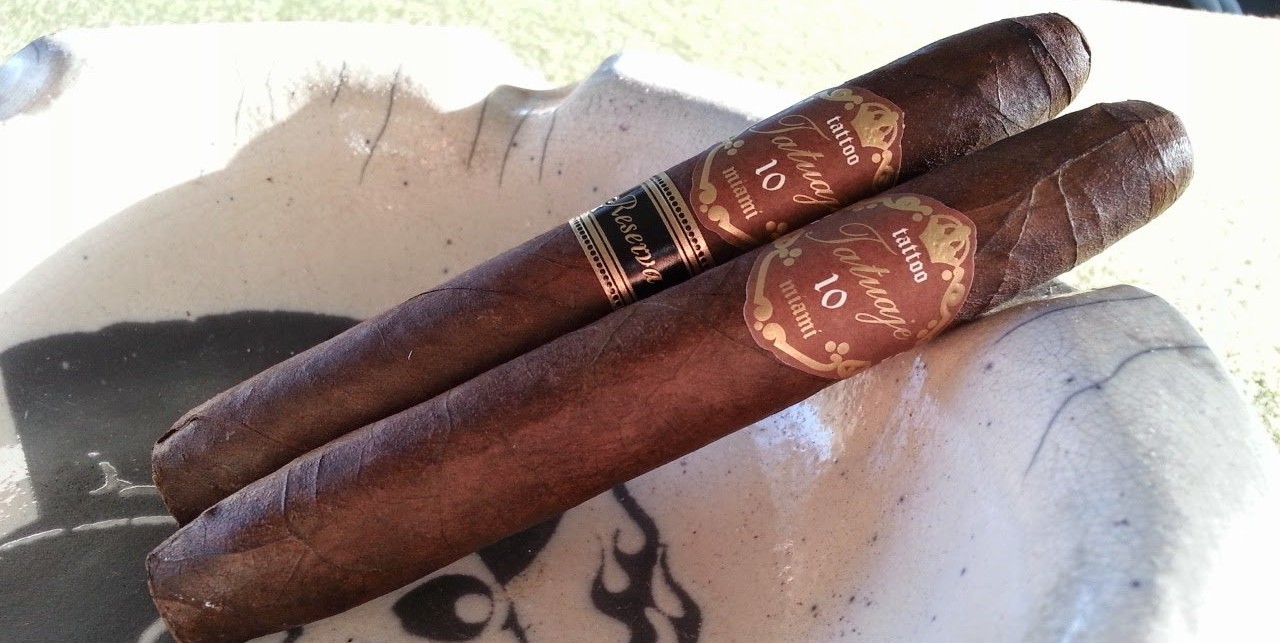
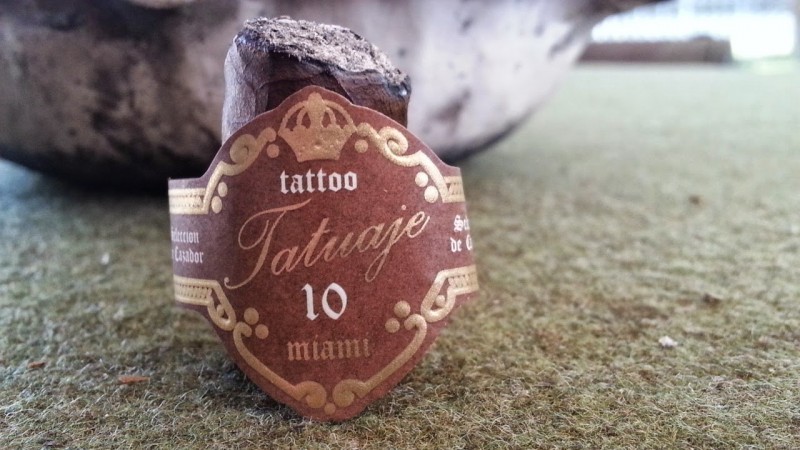
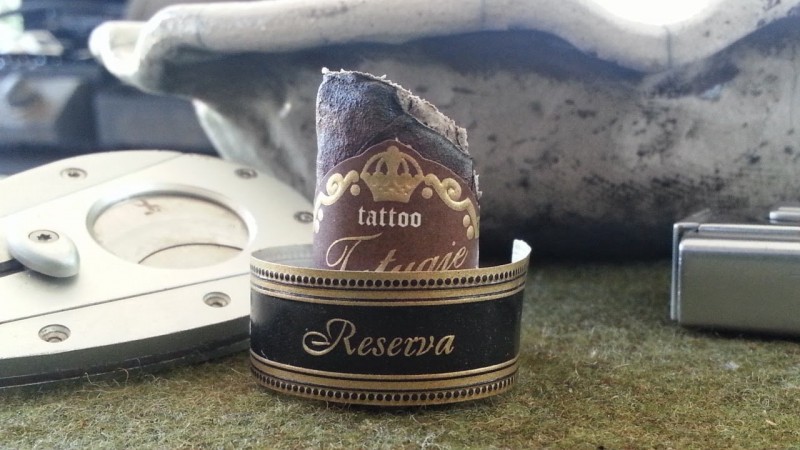
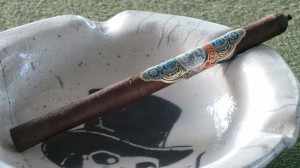
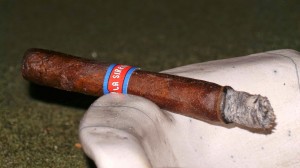
 A few weeks ago on Half Ashed, we talked a bit about the latest addition to Willy Herrera’s
A few weeks ago on Half Ashed, we talked a bit about the latest addition to Willy Herrera’s 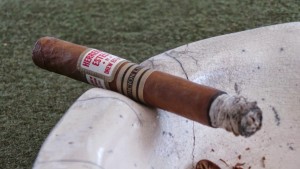 At the initial application of fire, the foot of one of my samples cracked, but the construction held true and quickly overcame the split. Since passing that, and throughout the first sample, the burn has been impeccably straight. As I get into the middle of the cigar, much of the earlier spice has dissipated and been replaced with a predominantly oaken character. Accompanying that is an incredibly long, toasty finish.
At the initial application of fire, the foot of one of my samples cracked, but the construction held true and quickly overcame the split. Since passing that, and throughout the first sample, the burn has been impeccably straight. As I get into the middle of the cigar, much of the earlier spice has dissipated and been replaced with a predominantly oaken character. Accompanying that is an incredibly long, toasty finish.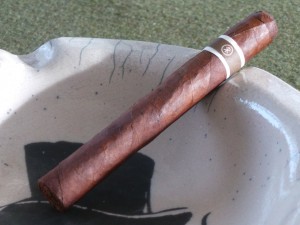 I was first introduced to the
I was first introduced to the  The initial puffs of the Aquitaine are bold, with some “bright” cedar and moderate spice. As expected, today’s example eagerly took to fire, and the burnline immediately aligns with even continuity around its perimeter. The cedar character remains throughout this early portion of the smoke, but becomes more subdued as I get into the heart of the cigar. Going into the second inch, the spice is tempered by some sweetness. Rather than the typical cocoa sweetness, I find a more leathery core to the Aquitaine. Some earthiness peeks through on occasion, but overall it retains this leather and baking spice nature for me. This continues throughout the midsection, with some increase in strength. As a whole, I would put the Aquitaine into the heavier end of medium with regard to strength – but definitely full in body, with an almost velvety feel on the palate. Entering the final stretch, the strength does pick up a couple of notches, but never approaches an unmanageable level. It’s quite comfortable, actually. Throughout this final segment, the flavors remain bold and firmly within the leathery, baking-spice tempered range – and the spice returns in full force. In short, I dig it.
The initial puffs of the Aquitaine are bold, with some “bright” cedar and moderate spice. As expected, today’s example eagerly took to fire, and the burnline immediately aligns with even continuity around its perimeter. The cedar character remains throughout this early portion of the smoke, but becomes more subdued as I get into the heart of the cigar. Going into the second inch, the spice is tempered by some sweetness. Rather than the typical cocoa sweetness, I find a more leathery core to the Aquitaine. Some earthiness peeks through on occasion, but overall it retains this leather and baking spice nature for me. This continues throughout the midsection, with some increase in strength. As a whole, I would put the Aquitaine into the heavier end of medium with regard to strength – but definitely full in body, with an almost velvety feel on the palate. Entering the final stretch, the strength does pick up a couple of notches, but never approaches an unmanageable level. It’s quite comfortable, actually. Throughout this final segment, the flavors remain bold and firmly within the leathery, baking-spice tempered range – and the spice returns in full force. In short, I dig it.